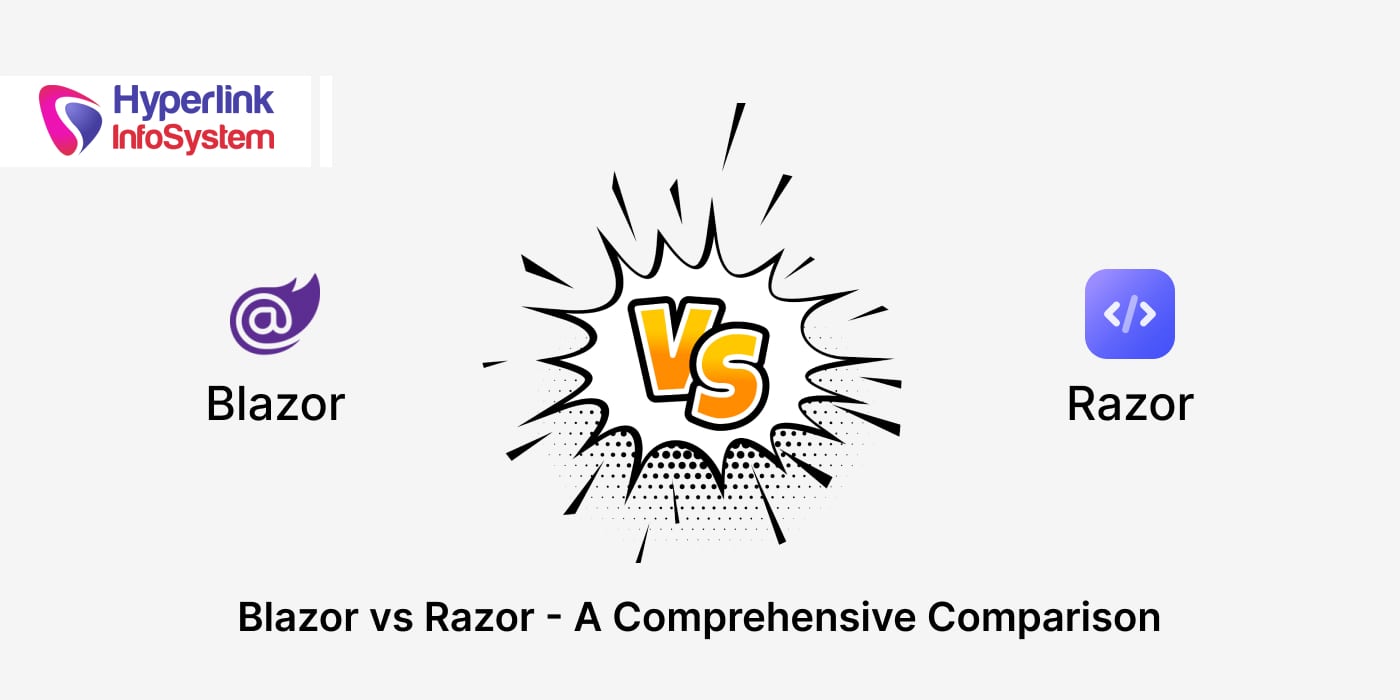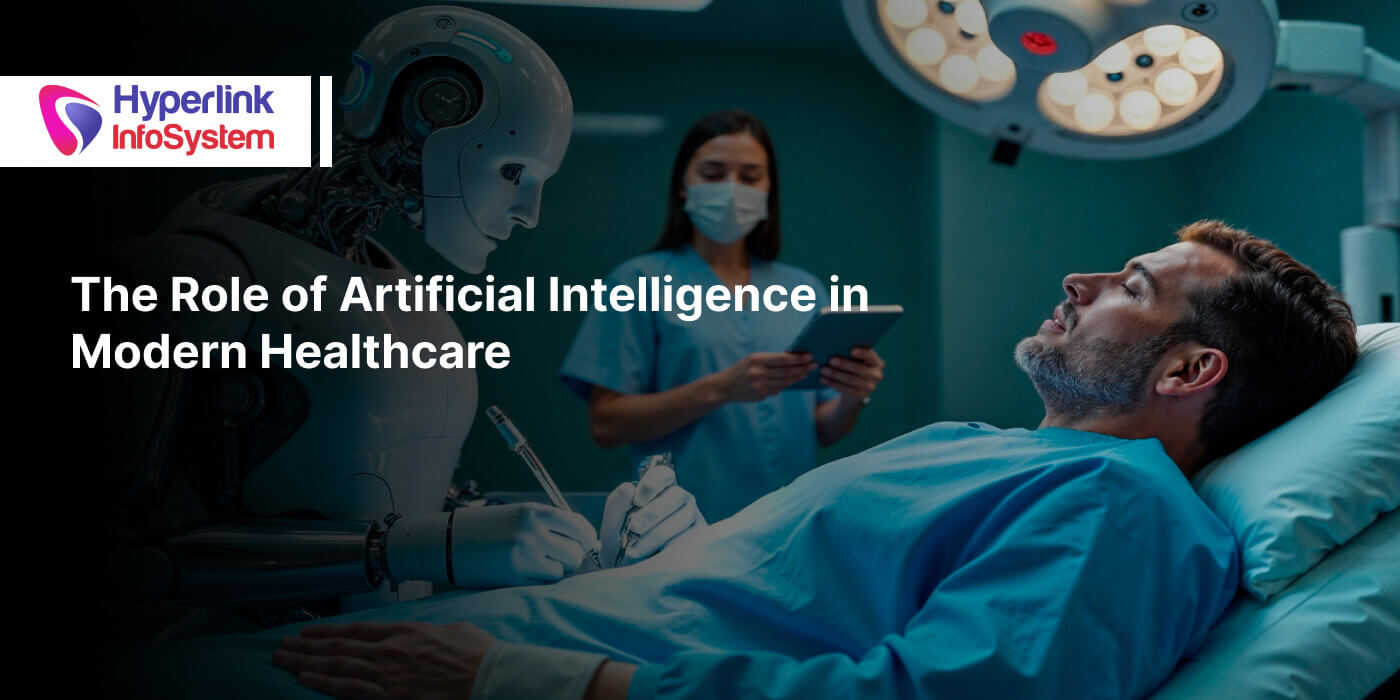Cost to Build a Driver Assistance System Like Tesla Autopilot
Jul 2025

Imagine a world where your car not only understands the road but anticipates danger before you do, keeping you safe, relaxed, and one step ahead. This is no longer science fiction. Welcome to the age of Driver Assistance Systems, where cutting-edge technology meets real-world driving to redefine how we move.
Leading the charge in this revolution has become Tesla Autopilot, a potent example of how far we have come in the arena of autonomous driving software development. Tesla's intelligent system does not merely lend support to the driver. Instead, it learns, adapts, and responds to complicated road scenarios with a deep fusion of sensors, cameras, and AI-empowered decision-making. What began as cruise control evolved into something much more intelligent: a co-pilot you can trust.
And this is the bigger trend itself. With smarter, safer, and better-connected vehicles, the rate of growth in AI in the automotive industry is thus accelerated. From highway lane assist to full self-driving features, automotive manufacturers and tech innovators seem to be racing to create intelligent mobility solutions for the near future.
It's not even just Tesla pushing the envelope. Demand for tailor-made driver assistance systems grows across automakers, mobility start-ups, and fleet operators looking at building safer and smarter vehicles. This spike in demand has led to soaring requirements for autonomous driving software development, ADAS solutions, and advanced AI integration. But here’s the million-dollar question:
How much does it actually cost to build a driver assistance system like Tesla Autopilot?
In this blog, we’ll break it all down — from the tech behind the scenes to the actual dollars you’ll need to invest. Regardless of whether you're a startup exploring opportunities or an automotive company planning some fresh innovation, the first step would always be to understand the development cost of driver assistance systems so as to be able to make their design a reality.
What do you mean by driver assistance system (ADAS)?
Wherever it has always been said that vehicles must take passengers from point A to point B, today, the enabling of players in road intelligence has been due to the Advanced Driver Assistance System (ADAS). These aren't just features; they're an entirely new layer of safety, automation, and ease into the driving experience.
So, what is ADAS?
The term ADAS (Advanced Driver Assistance Systems) comprises a suite of technologies meant to either assist the driver or make driving safer and more comfortable. It is like having extra eyes, ears, and reflexes in the car itself, watching the environment, warning the driver of impending danger, and taking over in critical situations.
Driver assistance systems may range from alarm systems like lane departure warnings to quite some distance away from it with adaptive cruise controls and auto brake systems. They are the new way in which we interact with our cars.
Types of Driver Assistance Systems
Driver assistance technology isn’t one-size-fits-all. It spans several layers of complexity, usually categorized into three levels:
1️⃣ Basic Driver Assistance
- Lane departure warning
- Rear-view cameras
- Blind spot detection
- Forward collision alerts
2️⃣ Advanced ADAS
- Adaptive cruise control
- Lane keeping assist
- Traffic sign recognition
- Auto parkin
- 3g systems
3️⃣ Autonomous Capabilities
- Highway autopilot
- Navigation on autopilot
- Hands-free driving (under certain conditions)
As technology evolves, more vehicles are shifting from basic assistive features to AI-powered, partially autonomous systems, opening the door to even greater innovation.
ADAS vs. Full Self-Driving: What’s the Difference?
Confusion happens quite often: ADAS versus full self-driving. In reality, they are two very different systems. An ADAS risk assists the driver and maybe even prevents human error. It's designed to reduce error, enhance safety, and smooth the process of driving. A human operates the system; however, the machinery is there to back them.
The domain of full self-driving now is to entirely supplant the act of driving. The order would be no hands on the wheel, no eyes on the road, the vehicle would accomplish and manage everything by itself. And although with the development of the Tesla Autopilot software, we are somewhat inched close to this stage, it is still far away before driverless vehicles are in the mainstream.
Simply put, ADAS development sits in the bridge between old-fashioned driving and autonomy. These layers are essential to understand if you want to provide a smarter vehicle experience, whether it is to provide increased safety, or to build an autopilot like the one Tesla has.
Tesla Autopilot: An Autonomous Driving Landmark
Whenever we talk about autonomous vehicles, there's almost always one contestant that pushes her way to the front: Tesla. Whether you love it or loathe it, Tesla Autopilot has, undoubtedly, put forth the best advances seen in driver assistance system development, and now, it is not just supplying cool features anymore – it has gone ahead to change the way we think about driving forever.
Dissecting the Evolution of Tesla Autopilot
Starting with rudimentary assistive functions like adaptive cruise control, lane centering, and emergency braking, Tesla's foray into autonomy has gone from humble beginnings with a narrow focus. But the system kept evolving, so it got very ambitious.
Today, Autopilot is split into two core packages:
- Autopilot (standard): Includes Traffic-Aware Cruise Control and Autosteer
- Full Self-Driving (FSD): Adds Navigate on Autopilot, Auto Lane Change, Autopark, Summon, and Beta access to Traffic Light & Stop Sign Control
Over time, what began as simple support has become a semi-autonomous driving system powered by advanced AI, data, and machine learning — the very ingredients that make Tesla Autopilot software development so revolutionary.
How Tesla Uses AI, Neural Networks & Sensor Fusion
Constella Tesla basically integrates a strong combination of AI and field data operating under Autopilot. While most competitors would rather heavily depend on LiDAR, Tesla puts all of its bets into vision-powered AI. So the car acts like a human driver making driving decisions with "eyes"-cameras- and "brain"-neural networks.
Here's the magic in action:
Neural Networks: Tesla's custom-made neural nets, trained on millions of real-world driving scenarios, make the system learn from edge cases and rare conditions.
Sensor Fusion: Going away from the use of radar and using "Tesla Vision" only made sense to Tesla; earlier generation cars combined radar, ultrasonic sensors, and cameras to sense and interpret surroundings. These days, this interpretation is pretty much based on a fusion of camera data with intelligent AI-based prediction systems.
AI Decision Engine: The Full Self-Driving Computer (FSD Computer or Hardware 3) processes all visual inputs very fast and makes decisions in real time, such as stopping for a red light or immediately changing lanes to avoid hazards.
An amazing perception and control algorithm stack sets the bar for any company wishing to build an autopilot system similar to Tesla.
Key Components Behind Tesla’s Autopilot System
In short, Tesla Autopilot is not a single technology, but an orchestrated ecosystem of hardware and software finely interwoven:
|
Component |
Function |
|
Cameras (8 total) |
Provide 360° visibility around the car |
|
Ultrasonic Sensors |
Help with close-range object detection (parking, curb detection) |
|
FSD Computer (Hardware 3/4) |
Processes all vision and sensor data in real time |
|
AI & ML Algorithms |
Identify and react to traffic, pedestrians, signs, and more |
|
Over-the-Air Updates |
Improve the system continuously with real-world data |
Tesla’s ability to collect, analyze, and update software remotely allows it to refine its system without the need for physical recalls. This is one of the defining advantages of Tesla's approach to autonomous driving software development.
In essence, Tesla Autopilot has become a benchmark not just because of its features, but because of its intelligence. For anyone exploring self-driving car software development or aiming to tap into the future of AI in the automotive industry, studying Tesla’s tech stack offers both inspiration and direction.
Key Components of a Driver Assistance System
It is important to build a smart and safe driver assistance system and it starts with choosing the right technology; every driver assistance system relies on four key components:
1. Sensors (LiDAR, Radar, Ultrasonic)
- LiDAR: Offers 3D mapping for precise object detection
- Radar: Tracks speed and distance, even in poor weather
- Ultrasonic: Handles close-range detection for parking and blind spots
- These sensors form the foundation of modern ADAS app development.
2. Cameras and Vision Systems
Multiple cameras give the car 360° visibility, detecting lanes, signs, traffic lights, and pedestrians. Vision is crucial in systems like Tesla Autopilot software development, where cameras act as the car’s “eyes”.
3. AI & Machine Learning
This is where the system gets smart. AI algorithms handle object detection, path planning, and real-time decisions — all vital for autonomous driving software development. It’s the brain behind the wheel.
4. Vehicle Control Systems
Once decisions are made, the control system kicks in — steering, braking, accelerating. It's the action layer that turns intelligence into motion.
A solid ADAS setup blends these components to create a vehicle that’s not just reactive, but predictive. Let's understand the cost to develop an AI-based driver assistance system in detail.
Also Read, AI in Fintech - Overview, Top Use Cases, Challenges, Trends, and More
Cost Factors in Developing a Driver Assistance System
There is no fix amount that can be defined as the cost of developing a driver assistance system, as it heavily depends on the complexity, features, technologies, and more. From sensor hardware to cloud infrastructure to compliance, all components are vital in determining your overall driver assistance system development cost.
Let us break it all out:
a. Hardware Cost
Hardware is the basis of any advanced driver assistance system (ADAS). It denotes the physical devices your system banks on to sense the environment and interact with the vehicle.
These include:
- LiDAR, Radar, and Ultrasonic Sensors: Measure distance, obstacles, speed, and any interfacing vehicles or pedestrians.
- High-Resolution Cameras: Provide images for road analysis and object detection.
- Electronic Control Units: The digital brain receives sensor input and makes split-second decisions.
However, costs escalate based on the complexity of implementation, anywhere from tens of thousands to hundreds of thousands of dollars. For firms offering custom ADAS development services, this dichotomy of choice significantly affects performance and price.
✅ Pro tip: The more sensors and high-end tech you include, the higher the cost to develop AI-based driver assistance systems.
b. Software Development Cost
Software is the intelligence. This is the very heart of the autonomous-driving-software-development program, and it takes up a big chunk of your project budget.
It includes:
- Core ADAS functionalities such as lane-keeping, adaptive cruise control, object detection, emergency braking, etc.
- Sensor integration and data fusion
- User interface for dashboards or mobile ADAS controls
- System optimization and fail-safes
To get this right, you need to hire dedicated software developers with expertise in AI, automotive protocols (like CAN bus), and embedded systems. If you want to productize an autopilot system similar to Tesla, working with a custom software development company or a leading AI development firm allows the project to unfold smoothly with a scalable architecture.
c. AI Model Training and Testing
Training AI models to safely and accurately navigate real-world scenarios isn’t cheap, but it’s essential. This involves:
- Collecting and labeling huge volumes of driving data
- Training deep learning models for object recognition, path prediction, and decision-making
- Testing in simulated and real-world environments
AI model development requires heavy computing power (think GPUs or TPUs), high-quality datasets, and skilled engineers. This is a major factor that affects the self-driving car software development cost.
d. Cloud Infrastructure
When you're dealing with real-time data from multiple sensors and AI systems, cloud infrastructure becomes non-negotiable. It supports:
- Data storage and processing
- Remote system monitoring and diagnostics
- OTA (Over-The-Air) updates
- Model training and deployment pipelines
Whether you’re collecting driving behavior analytics or pushing updates to vehicles in the field, cloud services are crucial, and contribute to your ADAS app development cost.
e. Compliance & Certification
Building the system is just one side of the coin. Making it road-legal is another. Any ADAS or autonomous system must pass through:
- Regulatory approvals and safety certifications (like ISO 26262, FMVSS)
- Automotive software compliance audits (ASPICE, AUTOSAR)
- Crash and simulation testing
This phase ensures your system is both reliable and safe for the public but also adds time and cost to the development process.
f. Maintenance and OTA Updates
The journey doesn’t end at deployment. Once your ADAS hits the road, you'll need ongoing support:
- Pushing software updates remotely (OTA)
- Fixing bugs, improving AI accuracy, and enhancing features
- Maintaining compliance with evolving safety standards
This long-term commitment often gets overlooked but is critical to keeping your system future-ready. Whether you’re a startup or an OEM, it pays to hire dedicated developers in India who can handle post-launch responsibilities.
The cost to build a driver assistance system is a combination of cutting-edge hardware, complex AI software, massive testing efforts, and ongoing cloud + maintenance support. If you're looking for a successful Tesla-level innovation, then you need a top-level team with you that can help you with a smart plan and technicality. A top AI development company with experience in a similar field can lead you to success in automotive software development.
Estimated Cost to Build a Driver Assistance System Like Tesla Autopilot
So you’ve explored the tech stack, AI, and cost factors. But now the big question arises: how much does it actually cost to build a driver assistance system like Tesla Autopilot?
The cost can vary drastically based on the system’s complexity — whether you’re building a basic lane-assist or diving into full self-driving. Here's a realistic estimate across three levels of complexity.
Also Read, AI Agents in 2025: A Comprehensive Review and Future Outlook
Driver Assistance System Development Cost Breakdown
|
Complexity Level |
Features |
Estimated Cost Range |
Examples |
|
Basic ADAS |
Lane departure Warning, Rear-view camera, Parking assist |
$25000 - $50000 |
Economy Cars, Smart parking systems |
|
Intermediate ADAS |
Lane keep assist, adaptive cruise control, emergency braking |
$60,000 – $120,000 |
Mid-range vehicles, fleet solutions, ride-sharing platforms
|
|
Full Self-Driving |
Autopilot navigation, auto lane change, traffic light recognition, AI-based decision-making |
$150,000 – $300,000+ |
Autonomous vehicles, premium EVs, delivery robots |
Interpreting the Numbers
- Basic Systems: Ideal for automakers or startups looking to add standard safety features. The development focuses on rule-based algorithms and minimal sensor input, keeping costs low.
- Intermediate ADAS: These systems add a layer of autonomy by using AI for real-time analysis. Great for businesses investing in custom ADAS development services or fleet management tools.
- Full Self-Driving: This is where the real challenge begins. To build an autopilot system like Tesla, you’ll need neural networks, sensor fusion, high-definition mapping, and real-time path planning. These require heavy investment in AI model training, cloud computing, and compliance — hence the higher price tag.
Pro Tip: Think Beyond Initial Development
When estimating the cost to develop AI-based driver assistance systems, don’t forget to account for:
- Ongoing AI model training and updates
- Data storage & cloud management
- Compliance renewal and testing
- Maintenance and over-the-air (OTA) software updates
Partnering with a trusted AI development company or automotive software development company can help you keep costs under control and development streamlined.
Bottom line? Whether you're building a safety-first ADAS or aiming for full autonomy, there’s a solution — and a budget — for every vision. Just be sure to hire AI developers or hire dedicated developers who understand both automotive challenges and cutting-edge AI.
Timeline for ADAS Development
Building a driver assistance system like Tesla Autopilot isn’t a weekend project — it’s a carefully phased journey. From initial research to real-world deployment, the timeline depends on the complexity of the system you’re developing.
Here’s a quick breakdown of the typical ADAS development lifecycle:
1. Research & Planning
- Market analysis, user needs, system architecture
- Time: 2–4 weeks
2. Design & Prototyping
- Sensor setup, UI/UX, AI model structure, hardware-software integration
- Time: 4–8 weeks
3. Development & Integration
- Code development, AI training, sensor fusion, real-time control
- Time: 8–16+ weeks
4. Testing & Validation
- Simulation, closed-loop testing, safety verification
- Time: 6–12 weeks
5. Deployment & OTA Setup
- System rollout, cloud integration, over-the-air updates
- Time: 2–4 weeks
Estimated Timelines by System Complexity
|
System Level |
Estimated Total Timeline |
|
Basic ADAS |
3 – 5 months |
|
Intermediate ADAS |
6 – 9 months |
|
Full Self-Driving |
12 – 18+ months |
Whether you’re planning to roll out a basic safety system or build an autopilot system like Tesla, working with the right AI development company and hiring dedicated developers can help you speed up delivery without compromising quality.
Custom ADAS Development Services for OEMs and Startups
When it comes to building smart, scalable driver assistance systems, one size doesn’t fit all. That’s why custom ADAS development services are gaining momentum among OEMs and mobility startups alike.
Custom vs. Off-the-Shelf: Why Custom Wins
Off-the-shelf ADAS solutions might be quick to deploy, but they often fall short in flexibility, performance tuning, and brand differentiation. Custom solutions, on the other hand, allow you to:
- Tailor features to your vehicle architecture
- Integrate proprietary AI models and UX
- Ensure full control over updates, data, and security
This is especially critical when your goal is to build an autopilot system like Tesla, not just add basic lane-keeping.
Real-World Integration
Custom ADAS isn't just software — it's built to fit seamlessly with real vehicles. From aligning with in-car ECUs to syncing with sensors and infotainment systems, it’s all about flawless coordination. Whether you're an established OEM or a rising startup, working with a custom software development company ensures smooth integration and long-term scalability.
Looking to hire AI developers or a top AI development company for your next ADAS project? Let’s talk real innovation.
Why Choose a Top AI Development Company Like Hyperlink InfoSystem for ADAS?
When it comes to ADAS development, experience isn’t optional — it’s essential. To build a driver assistance system like Tesla Autopilot, you need more than just good code. You need a tech partner that understands the road, the data, and the machine learning driving it all.
- Expertise That Drives Innovation
At Hyperlink InfoSystem, we combine deep expertise in AI development, automotive software engineering, and embedded systems to deliver ADAS solutions that are fast, accurate, and road-ready.
- Strong R&D and Data Science Team
Our in-house R&D team and data scientists continuously train and fine-tune models using real-world data, ensuring your AI-based driver assistance system adapts, learns, and improves over time, just like Tesla’s.
- Custom-Built. Scalable. Future-Proof.
We don’t do cookie-cutter. As a custom software development company, we build ADAS platforms tailored to your vehicle specs, market goals, and safety standards. Whether you're an OEM or a startup, you can hire AI developers, hire software developers, or even a full, dedicated development team to bring your vision to life.
So if you’re looking for a trusted partner to drive your ADAS innovation, choose a top AI development company that delivers software and smarter mobility.
Challenges in ADAS and Self-Driving Software Development
Building cutting-edge driver assistance systems and self-driving software like Tesla Autopilot is thrilling, but it comes with its own set of tough challenges.
- Data Privacy and Cybersecurity
ADAS and autonomous vehicles rely on massive amounts of data from sensors, cameras, and user behavior. Protecting this data against breaches and cyberattacks is critical. Ensuring secure communication between the vehicle and cloud infrastructure demands top-tier cybersecurity protocols, a must for any AI development company working in automotive software.
- Handling Edge Cases in AI
No two drives are the same. Rare or unpredictable situations—like unusual weather, unexpected obstacles, or erratic driver behavior are known as edge cases. Training AI to recognize and safely respond to these is one of the hardest parts of autonomous driving software development. It requires constant data collection, model updates, and rigorous testing.
- Government Regulations and Regional Compliance
Navigating the patchwork of laws governing autonomous vehicles across countries and states is complex. Compliance with safety standards, privacy laws, and testing protocols can slow down development and deployment. A knowledgeable custom software development company will help ensure your ADAS system meets all required regulations, avoiding costly delays.
Understanding and addressing these challenges early on is key to building a reliable, safe, and scalable driver assistance system. Partnering with experts who know the landscape makes all the difference.
Also Read, Next-Gen Transportation Powered by AI: Benefits, Use Cases and Examples
Conclusion
Developing a driver assistance system like Tesla Autopilot is a complex journey that blends advanced AI, cutting-edge hardware, and rigorous testing. While the cost to build a driver assistance system varies depending on features and complexity, the value it brings—in safety, innovation, and competitive edge—is priceless.
Whether you're an OEM or a startup aiming to lead in autonomous driving, investing in the right technology partner is crucial. A top AI development company like Hyperlink Infosystem with deep automotive expertise can transform your vision into a reliable, scalable ADAS solution.
Ready to accelerate your project with expert guidance? Contact us today, your trusted custom software development company to build future-ready, intelligent driver assistance systems that drive innovation forward.
Frequently Asked Questions
It helps the driver stay safe and focused. Think of things like keeping the car in its lane, adjusting speed, or even helping with parking, all without taking full control away from the driver.
It can be, yes. A basic setup might start around ₹80 lakhs ($100K), but if you're aiming for something close to Tesla-level features, the cost can go much higher.
Mostly the tech AI models, real-time sensors, hours of testing, and making sure it meets safety standards. The more advanced the system, the more time and resources it takes.
You’re looking at several months at least. Simpler systems might be ready in 6–8 months. If it’s complex, like Autopilot, it could take over a year.
Yes, if they’ve got the right team, AI developers, automotive engineers, and experience with real-time systems. It’s a mix of smart software and deep industry know-how.
Latest Blogs

Is BlockChain Technology Worth The H ...
Unfolds The Revolutionary & Versatility Of Blockchain Technology ...


IoT Technology - A Future In Making ...
Everything You Need To Know About IoT Technology ...

Feel Free to Contact Us!
We would be happy to hear from you, please fill in the form below or mail us your requirements on info@hyperlinkinfosystem.com
Hyperlink InfoSystem Bring Transformation For Global Businesses
Starting from listening to your business problems to delivering accurate solutions; we make sure to follow industry-specific standards and combine them with our technical knowledge, development expertise, and extensive research.
4500+
Apps Developed
1200+
Developers
2200+
Websites Designed
140+
Games Developed
120+
AI & IoT Solutions
2700+
Happy Clients
120+
Salesforce Solutions

40+
Data Science

















